
Presentation of Guru Debaprasad Das Nrutya Ratna-2019
- Nita Vidyarthi
e-mail: nitavidyarthi@gmail.com
Photos courtesy: Tridhara
August 22, 2019
If one understands the significance of Guru Purnima, one also
understands the significance of the age-old tradition of Indian
classical music and dance and its philosophy. The Guru has played a
vital role in the music and dance history of India and in spite of
innumerable invasions and foreign domination, has stood the test of
time. The institution of the Guru has to survive in order to perpetuate
the music and dance tradition. So there could not have been a better way
to celebrate Guru Purnima than to devote an exclusive evening to honour
the gurus, all veterans and watch them perform.
This year Tridhara, Bhubaneswar, under the initiative of Guru Gajendra
Panda, director and custodian of the institution established by the
legendary Odissi Guru Debaprasad Das, has taken a big step forward by
presenting Debaprasad Das's senior-most disciples, all of whom are
renowned gurus now, with the 'Guru Debaprasad Das Nrutya Ratna' at a
specially organised ceremony at the Rabindra Mandap, Bhubaneswar. The
day was in another way special as it coincided with the death
anniversary of Guru Debaprasad Das and the annual day-long
'33rd Shradhanjali Samaroha', a festival of Odissi dance organised by
Tridhara, in which dancers belonging to the Debaprasad Gharana pay
tribute to the guru through dance.
The evening was inaugurated by Minister of Culture and Tourism,
Jyotiprakash Panigrahi and Principal Secretary, Manoranjan Panigrahy,
Odia language Literature and Culture. Altogether, fourteen gurus out of
19 invited were present, but only seven performed. There were no
reminiscences by the recipients, only celebration. Illuminated happy
faces with twinkling eyes - some wet ones - said it all. They expressed
their happiness and praised the touching gesture and concern of Guru
Gajendra Panda. He appeared to them as the visible hero!
Slide show

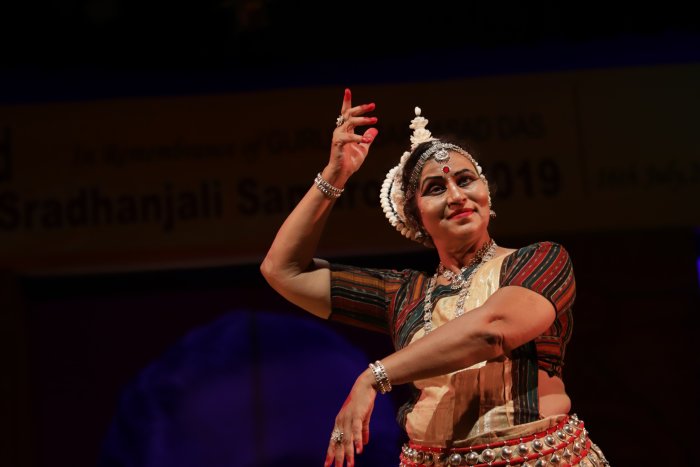
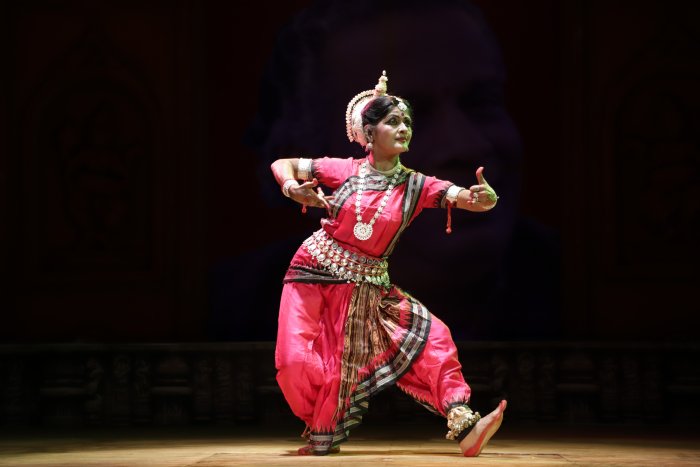
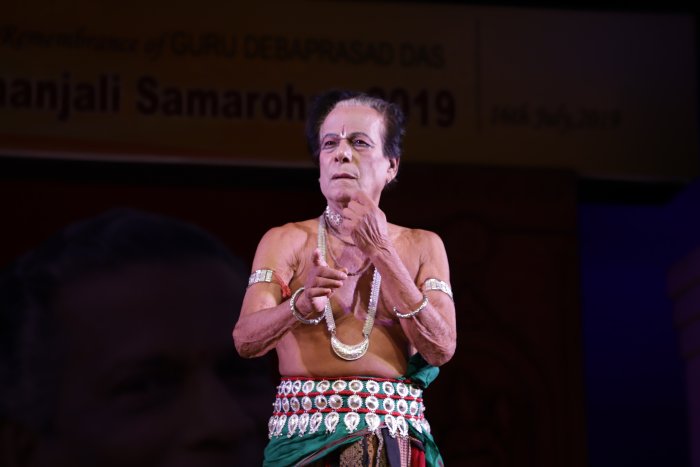


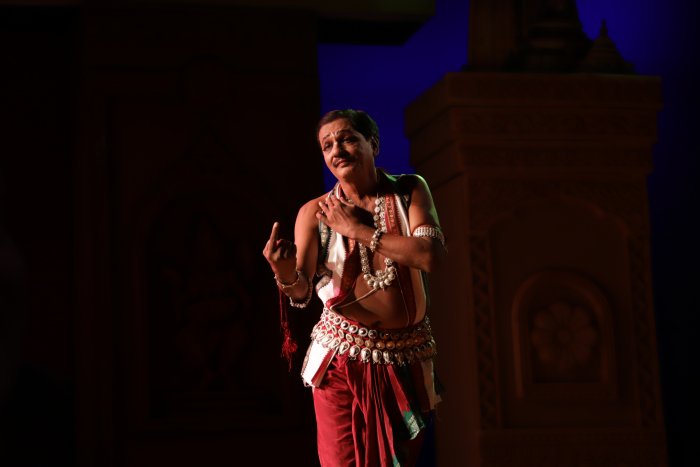
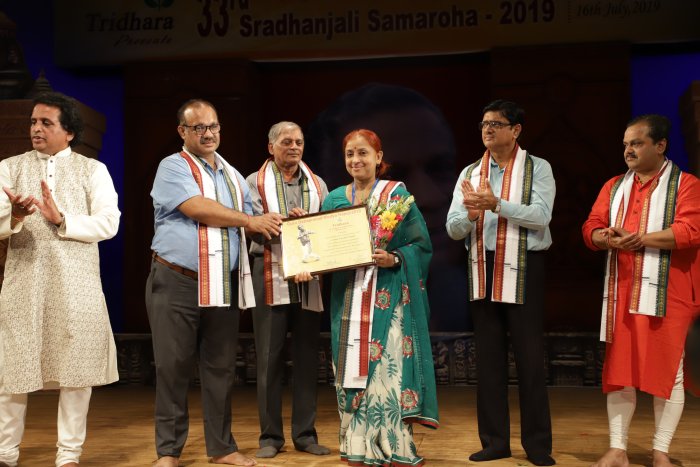
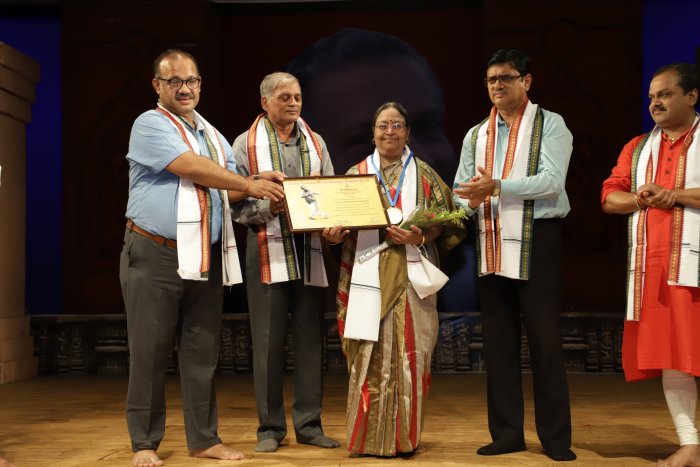
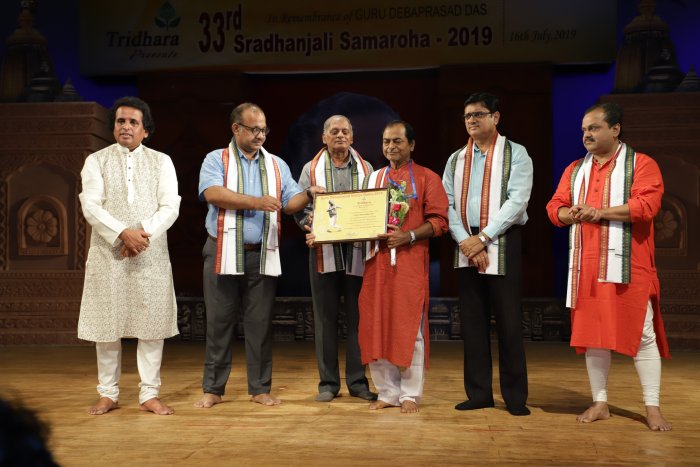
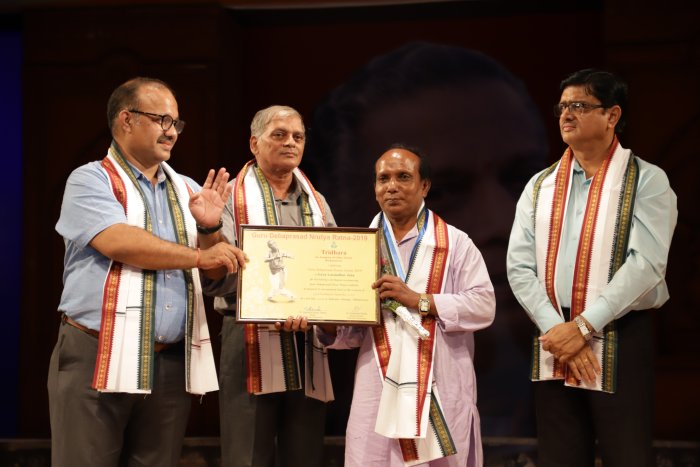
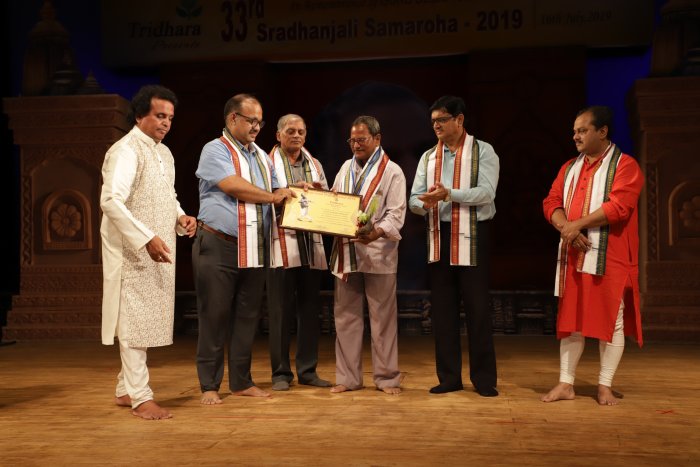
The opening performance "Bosi kanda thiba manini" in
ektali, penned by Kavi Samrat Upendra Bhanja was an Odiya abhinaya by
Braja Kishore Mallick. He impressed as the Nayak who says that in
Basanta ritu the nayika is pining and weeping for him. The dancer
encompassed an astonishing range of emotional intensity of thinking and
wondering with a measure of personal expressiveness. Elegant movements
with passionate expressions, enhanced by Ghanashyam Panda's singing,
revealed the soul of the poet with the final stance in the sitting
position, thinking!
A very fulfilling, sensitive and poised performance of Jayadeva's
ashtapadi "Rase harimiha bihita vilasam" in raag
Kaphi, taal Jati by Anita Singhdeo displayed how this stately, graceful
and mature dancer enjoyed an easy balance between inspiration, training
and her technical resources with the live music. Her entry with delicate
steps was carefully featured with her sounding ankle bells following a
single melody. The control and visualization of expressions were
obviously the result of her experience.
Chapala Mishra presented Guru Debaprasad Das's timeless composition
"Ganga Tarang'' which is a Kashi Vishwanath dhyan. Her portrayal
of Ganga flowing through Lord Shiva's matted locks showed fluent command
of the mechanics of the composition with fine body inflexions embracing
the mobile points of Odissi with chiselled movements. After this sloka
in obeisance to Lord Vishwanath, which went on a rather slow pace, she
presented the riveting Ravanakruta Shiva Tandava "Jata kata
hasambrahma" translating the words of the famous sloka into a torrent of
vigour with impactful singing by Sukanta Kundu. The piece was set to
raag Darbari, ekatali.
It was a real privilege to watch Guru Debaprasad Das's first student,
the 84 year old Guru Sudhakar Sahu perform a soulful abhinaya piece
"Eh ghora barasakaley priyarasa" with such romantic
glances. The Upendra Bhanja composition in taal triputa, replete with
shringar rasa was about the pining of one's beloved during the heavy
monsoon and was expressed with intense subtlety, the lyrics articulated
by captivating, delicate and careful movements spiced by the sparkling
eyes of the master dancer. His finger dexterity was so smooth and
effortless that his hands were never weary.
Nilashree Mohanty expressed the plight of a woman loyal to her husband
in a telling manner in the Odiya abhinaya "Dekhile paran
jiba chhad mohona" written by poet Gopalkrishna set to taal
Jhampa. Her involved enactment of Radha's anxiety when Krishna holds her
hand while she is on her way with fruits and flowers to worship the Sun
god, apprehending the consequences if her in-laws or sakhis happen to
see them, was quite impressive.
Minakshi Behera's impactful rendition of Jayadeva ashtapadi, as the
khandita nayika starting with "Atha kathampi yamini
biniya" the first segment of the 8th canto and passing on to the
precious line "Yahi Madhava, Yahi Keshava" of the classic
composition set to raag Bhairavi, ekatali, was brought to life by her
experience and mature understanding. Harihar Mohanty, with slow paced
movements capitalized on his abhinaya skills to present the ashtapadi
"Nindati chandanamindu kiranamanu" in raag Mukhari, taal
ekatali. Even though he performed mostly while sitting, his sensitive
execution with various expressive resources at different levels was well
received by the audience.
It was a great pity that the audience could not enjoy the valuable
performances of the practicing gurus present. A consummate dancer,
Gayatri Chand could not perform due to her fractured leg. The Bandha
Nritya wonder girl Bijayalaxmi Mohanty was also unable to perform.
Others present were Niranjan Rout, Bimbadhar Das, Laxmidhar Jena,
Prakanta Moharana and Dr. Manoj Kumar Behera. The gurus who did not turn
up were Gobinda Chandra Pal, Durgacharan Ranbir, Kalpana Thamba, Dipti
Mishra and Dr. Sujata Mishra. Live musical support by well-known
musicians was an asset as was the unparalleled steering of the ceremony
by Dr. Srinibas Ghatuary (everyone's Milan).
The performances were pictorial and descriptive to a remarkable degree
and throw a revealing light upon Debaprasad Das's compositions and his
whole aesthetic approach to his dance style. In these pieces, Debaprasad
Das painted scenes, portrayed emotions and moods depicted the most
elusive shades of meaning that were expressed by the words actually
anticipating the idea behind the song style of the poet.
It was an advantage to watch the fruits of first-rate teaching which
stemmed from direct contact of these able dancers with the legendary
guru. The viewer has to be sufficiently aware of the composer's style to
be able to appreciate the aesthetic triumph of their ultimate solution.
Above all, it was an evening of stalwarts paying shradhanjali to their
revered Guru through dance, replete with joy, emotion and a feeling of
togetherness.
Dr. Nita Vidyarthi is a veteran critic of performing arts and writes on dance, music and theatre in leading publications.
|





